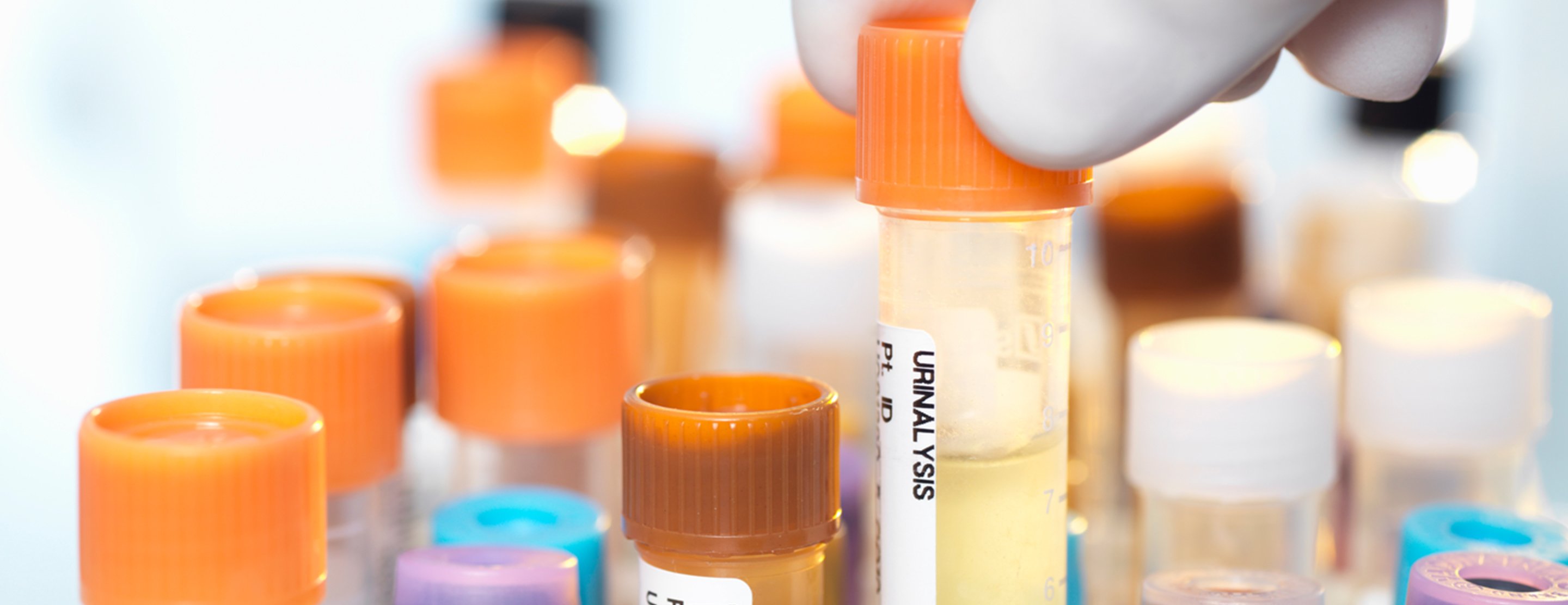
Urinalysis
Definition
Urinalysis is the physical, chemical, and microscopic examination of urine. It involves a number of tests to detect and measure various compounds that pass through the urine.
Alternative Names
Urine appearance and color; Routine urine test; Cystitis - urinalysis; Bladder infection - urinalysis; UTI - urinalysis; Urinary tract infection - urinalysis; Hematuria - urinalysis
How the Test is Performed
A urine sample is needed. Your health care provider will tell you what type of urine sample is needed. Two common methods of collecting urine are
The sample is sent to a lab, where it is examined for the following:
PHYSICAL COLOR AND APPEARANCE
How the urine sample looks to the naked eye:
- Is it clear or cloudy?
- Is it pale, or dark yellow, or another color?
MICROSCOPIC APPEARANCE
The urine sample is examined under a microscope to:
- Check if there are any cells, urine crystals,
urinary casts , mucus, and other substances. - Identify any bacteria or other germs.
CHEMICAL APPEARANCE (
- A special strip (dipstick) is used to test for substances in the urine sample. The strip has pads of chemicals that change color when they come in contact with substances of interest.
Examples of specific urinalysis tests that may be done to check for problems include:
Red blood cell urine test Glucose urine test Protein urine test Urine pH level test Ketones urine test Bilirubin urine test Urine specific gravity test
How to Prepare for the Test
Certain medicines change the color of urine, but this is not a sign of disease. Your provider may tell you to stop taking any medicines that can affect test results.
Medicines that can change your urine color include:
- Chloroquine
- Iron supplements
- Levodopa
- Nitrofurantoin
- Phenazopyridine
- Phenothiazine
- Phenytoin
- Riboflavin
- Triamterene
How the Test will Feel
The test involves only normal urination, and there is no discomfort.
Why the Test is Performed
A urinalysis may be done:
- As part of a routine medical exam to screen for early signs of disease
- If you have signs of
diabetes or kidney disease, or to monitor you if you are being treated for these conditions - To check for
blood in the urine - To diagnose a
urinary tract infection
Normal Results
Normal urine varies in color from almost colorless to dark yellow. Some foods, such as beets and blackberries, may turn urine red.
Usually, glucose, ketones, protein, and bilirubin are not detectable in urine. The following are not normally found in urine:
- Hemoglobin
- Nitrites
- Red blood cells
- White blood cells
Normal value ranges may vary slightly among different laboratories. Some labs use different measurements or test different samples. Talk to your provider about the meaning of your specific test results.
What Abnormal Results Mean
Abnormal results may mean you have an illness, such as:
Urinary tract infection Kidney stones - Poorly controlled diabetes
Bladder orkidney cancer
Your provider can discuss the results with you.
Risks
There are no risks with this test.
Considerations
If a home test is used, the person reading the results must be able to tell the difference between colors, because the results are interpreted using a color chart.
References
Chernecky CC, Berger BJ. Urinalysis (UA) - urine. In: Chernecky CC, Berger BJ, eds. Laboratory Tests and Diagnostic Procedures. 6th ed. St Louis, MO: Elsevier Saunders; 2013:1146-1148.
Riley RS, McPherson RA. Basic examination of urine. In: McPherson RA, Pincus MR, eds. Henry's Clinical Diagnosis and Management by Laboratory Methods. 23rd ed. St Louis, MO: Elsevier; 2017:chap 28.
Review Date: 02/07/2019
The information provided herein should not be used during any medical emergency or for the diagnosis or treatment of any medical condition. A licensed physician should be consulted for diagnosis and treatment of any and all medical conditions. Call 911 for all medical emergencies. Links to other sites are provided for information only -- they do not constitute endorsements of those other sites. Copyright ©2019 A.D.A.M., Inc., as modified by University of California San Francisco. Any duplication or distribution of the information contained herein is strictly prohibited.
Information developed by A.D.A.M., Inc. regarding tests and test results may not directly correspond with information provided by UCSF Health. Please discuss with your doctor any questions or concerns you may have.





